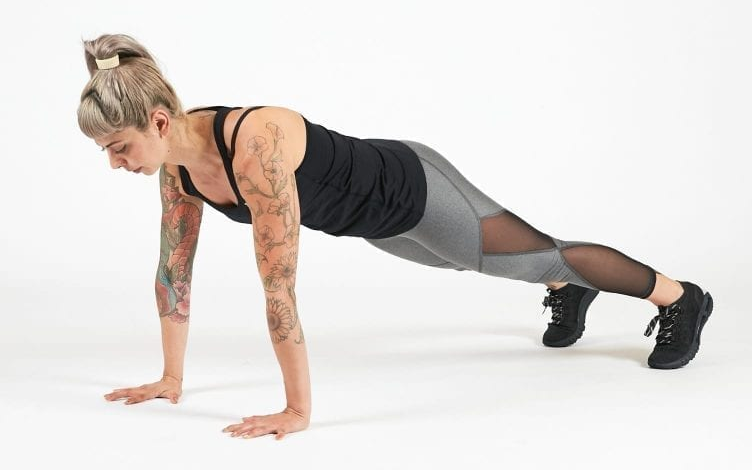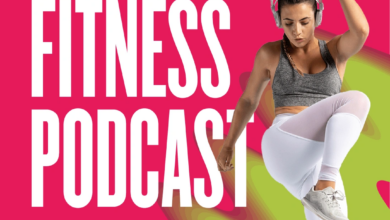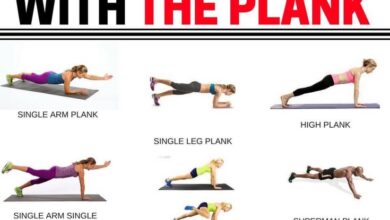
Avoid These Common Pushup Mistakes
The most common pushup mistakes to avoid are often subtle, but they can significantly impact your form, effectiveness, and even risk of injury. Whether you’re a seasoned athlete or just starting your fitness journey, understanding these pitfalls is crucial for maximizing your pushup potential.
From hand placement to breathing techniques, we’ll delve into the most frequent errors and provide actionable tips for achieving a perfect pushup.
Pushups are a fundamental exercise that targets multiple muscle groups, making them a staple in countless workout routines. However, their simplicity can be deceiving. Many people unknowingly make mistakes that hinder their progress and expose them to potential injuries. This guide will equip you with the knowledge to identify and correct these common errors, allowing you to perform pushups with optimal form and efficiency.
Form and Alignment
Proper form is crucial for a successful pushup, ensuring you maximize muscle engagement and minimize risk of injury. A solid foundation starts with understanding how hand placement and body alignment influence the effectiveness and safety of this exercise.
Hand Placement
Hand placement plays a significant role in pushup mechanics, affecting muscle activation and the overall challenge of the exercise.
- Placing your hands slightly wider than shoulder-width apart creates a more stable base and emphasizes chest activation. This variation is ideal for beginners as it offers greater stability and control.
- A closer hand position, with hands closer than shoulder-width, increases the difficulty of the exercise by engaging the triceps more prominently. This variation is particularly beneficial for those seeking to build arm strength.
- For a more targeted chest workout, consider a wide hand position, with hands significantly wider than shoulder-width. This variation requires greater core strength and stability.
Arched Back and Sagging Hips
Maintaining proper body alignment during a pushup is essential to prevent strain and maximize effectiveness. An arched back or sagging hips can lead to imbalances and reduce the exercise’s benefits.
- An arched back puts undue stress on the lower back and reduces chest muscle activation, potentially leading to injury. It also shifts the weight distribution, making the exercise less challenging for the chest muscles.
- Sagging hips, on the other hand, can strain the lower back and limit the range of motion, preventing proper muscle engagement. This posture also compromises the overall stability and control during the exercise.
Proper Alignment for Pushups
Achieving proper alignment for a pushup is key to reaping its benefits and preventing injury. Follow these steps to ensure you are performing the exercise correctly:
- Start in a plank position, with your hands shoulder-width apart, fingers pointing forward, and your body forming a straight line from your head to your heels.
- Engage your core muscles to maintain a stable and neutral spine, preventing any arching or sagging.
- Lower your body until your chest touches the ground, keeping your elbows close to your sides and your body in a straight line.
- Push yourself back up to the starting position, maintaining proper alignment throughout the movement.
Hand Positions Comparison
| Hand Position | Benefits | Drawbacks |
|---|---|---|
| Shoulder-width | Good for beginners, balanced muscle engagement | Less chest activation compared to wide grip |
| Wide | Greater chest activation, increased challenge | Requires greater core strength and stability, potentially leading to instability |
| Close | Increased triceps engagement, greater arm strength development | More challenging for beginners, potential strain on wrists |
Range of Motion

A full range of motion (ROM) during pushups is crucial for maximizing muscle activation, improving strength, and preventing injuries. By performing pushups with a complete range of motion, you engage your chest, shoulders, and triceps more effectively, leading to greater muscle growth and overall fitness gains.
The Importance of Full Range of Motion
Failing to reach full extension or going deep enough during a pushup can limit the effectiveness of the exercise and potentially lead to muscle imbalances and injury. Here’s why:
- Reduced Muscle Activation:A full range of motion ensures that your muscles work through their entire length, maximizing their activation and promoting greater strength gains.
- Limited Strength Development:Partial pushups target only a limited portion of the muscle, preventing you from developing full strength potential.
- Increased Risk of Injury:By not moving through the full range of motion, you are putting unnecessary stress on your joints, which can increase the risk of injury over time.
The Difference Between Partial and Full Pushups
- Partial Pushups:In a partial pushup, the body doesn’t descend all the way to the floor. This limits the range of motion and reduces the effectiveness of the exercise. Imagine a pushup where you only go halfway down, your chest never touches the floor.
- Full Pushups:In a full pushup, the body descends until the chest touches the floor. This allows for a complete range of motion, maximizing muscle activation and promoting strength gains. The entire body is engaged, and the movement is smooth and controlled.
Maximizing Range of Motion While Maintaining Proper Form
To maximize your range of motion while maintaining proper form, consider the following tips:
- Focus on controlled movement:Avoid bouncing or jerking your body during the exercise. Instead, focus on slow, controlled movements.
- Engage your core:Keeping your core engaged helps stabilize your body and prevent your back from arching.
- Maintain a straight line from head to heels:Avoid letting your hips sag or your back arch.
- Practice regularly:The more you practice, the better you will become at maintaining proper form and maximizing your range of motion.
Tempo and Control
Tempo and control are crucial aspects of proper pushup form, ensuring you engage the right muscles and minimize the risk of injury. A controlled pushup involves deliberate movements throughout the entire exercise, avoiding rushing or slowing down excessively. This allows you to maximize muscle activation and maintain proper form.
The Impact of Tempo on Pushups
Tempo refers to the speed at which you perform each repetition. Rushing through pushups can compromise your form, reducing muscle engagement and potentially leading to injuries. Conversely, slowing down excessively can lead to fatigue and hinder your ability to maintain proper technique.
- Rushing through pushupscan result in relying on momentum instead of muscle strength, leading to decreased muscle activation and potential strain on joints.
- Slowing down excessivelycan cause fatigue and hinder your ability to maintain proper form, particularly in the lower portion of the exercise.
Tempo Variations and Benefits
Different tempos can be used to target specific fitness goals and challenge your muscles in unique ways. Here’s a table outlining various tempos and their corresponding benefits:
| Tempo | Description | Benefits |
|---|---|---|
| 1-0-1-0 | One second for the lowering phase, no pause at the bottom, one second for the pushing phase, no pause at the top. | Focuses on controlled movement and muscle activation. |
| 2-0-2-0 | Two seconds for the lowering phase, no pause at the bottom, two seconds for the pushing phase, no pause at the top. | Increases time under tension, enhancing muscle growth and strength. |
| 3-0-1-0 | Three seconds for the lowering phase, no pause at the bottom, one second for the pushing phase, no pause at the top. | Emphasizes eccentric muscle contraction, improving muscle hypertrophy and strength. |
| 1-0-3-0 | One second for the lowering phase, no pause at the bottom, three seconds for the pushing phase, no pause at the top. | Challenges muscle endurance and improves control during the concentric phase. |
Tempo Adjustments for Fitness Goals
Tempo can be adjusted based on your specific fitness goals. For example:
- For strength gains, consider using a slower tempo with a longer lowering phase, such as 3-0-1-0.
- For muscle endurance, opt for a tempo with a longer pushing phase, such as 1-0-3-0.
- For overall fitness, a moderate tempo like 2-0-2-0 can provide a balanced approach.
Breathing
Breathing is an essential aspect of pushups, often overlooked but crucial for proper form, power, and endurance. Proper breathing technique during pushups helps regulate your body’s oxygen intake, supports core stability, and allows for a more efficient and controlled movement.
Breathing Patterns for Pushups
Different breathing patterns can be used during pushups, each with its own advantages.
Exhale on the Downward Phase
This is the most common breathing pattern for pushups. It involves exhaling as you lower your body towards the ground, engaging your core muscles and providing stability. Inhaling on the upward phase helps you regain your breath and prepare for the next repetition.
Let’s talk about pushups! It’s easy to get caught up in the number of reps, but proper form is key to avoiding injuries. Remember to keep your core engaged and your back straight – a wobbly core can lead to all sorts of issues.
Speaking of colorful things, I’m planning a Thanksgiving feast this year and I’m looking for some inspiration to add pops of color to the table. I’ve found some great ideas on this article about 5 ways to fill your thanksgiving table with color.
Back to pushups, don’t forget to keep your elbows tucked in and your body in a straight line. A little bit of color on your plate can go a long way, and a little bit of form can go a long way in your pushups.
This pattern is generally recommended for beginners as it helps maintain core engagement and control.
One of the most common pushup mistakes is letting your hips sag, which can strain your lower back. Another is flaring your elbows out, which can put stress on your shoulders. To avoid these mistakes, focus on maintaining a straight line from your head to your heels, keeping your elbows tucked in close to your body.
And if you’re looking for a post-workout reward, check out these 11 healthy pizzas under 400 calories – a guilt-free way to celebrate your hard work! Remember, proper form is crucial for a successful pushup routine, so take your time, listen to your body, and enjoy the benefits of this versatile exercise.
Inhale on the Downward Phase
This breathing pattern is less common but can be beneficial for experienced individuals. Inhaling as you lower your body allows for a deeper breath and can help increase power output during the upward phase. Exhaling on the upward phase helps control the movement and maintain stability.
This pattern requires more advanced control and may not be suitable for everyone.
Tips for Consistent Breathing
Maintaining consistent breathing throughout your pushups is essential for optimal performance. Here are some tips:
- Focus on deep, controlled breaths, avoiding shallow or rapid breathing.
- Breathe through your nose, allowing for a more natural and regulated airflow.
- Avoid holding your breath, as this can restrict oxygen flow and lead to fatigue.
- Practice breathing exercises beforehand to improve your lung capacity and control.
Breathing Technique for Beginners, The most common pushup mistakes to avoid
For beginners, it’s important to establish a consistent breathing pattern. Here’s a step-by-step guide:
- Start with a few practice breaths, focusing on deep, controlled inhales and exhales.
- As you lower your body towards the ground, exhale slowly and steadily.
- At the bottom of the pushup, pause for a moment and take a deep inhale.
- As you push yourself back up, exhale again, keeping your core engaged.
- Repeat this pattern for each repetition, maintaining a consistent breathing rhythm.
Common Pushup Mistakes
Mastering the pushup requires proper form and technique. Even subtle errors can compromise your workout, hinder progress, and even lead to injuries. This section will delve into some of the most common pushup mistakes, providing detailed explanations, visuals, and tips for correction.
Incorrect Hand Placement
Incorrect hand placement is a common mistake that can negatively impact your pushup form.
- Hands too wide: This can put excessive stress on your shoulders and limit your range of motion.
- Hands too narrow: This can strain your wrists and limit your ability to generate power.
- Hands too high: This can lead to a loss of stability and an increased risk of injury.
- Hands too low: This can restrict your range of motion and make the exercise less effective.
| Mistake | Visual | Explanation | Correction |
|---|---|---|---|
| Hands too wide | [Image of hands positioned far apart, wider than shoulder width] | Hands placed wider than shoulder-width apart can put undue strain on your shoulder joints, leading to potential instability and discomfort. It can also hinder proper chest activation. | Place your hands shoulder-width apart, ensuring your elbows are aligned with your wrists. |
| Hands too narrow | [Image of hands positioned close together, narrower than shoulder width] | Placing your hands too close together, narrower than shoulder-width apart, can strain your wrists and limit your ability to generate power. This can lead to discomfort and reduced effectiveness. | Adjust your hand placement to shoulder-width, allowing for proper elbow alignment with wrists. |
| Hands too high | [Image of hands positioned higher than shoulder level] | Hands positioned higher than shoulder level can lead to a loss of stability, making the exercise less effective. This can also put additional strain on your wrists and forearms. | Ensure your hands are directly below your shoulders, maintaining a straight line from your wrists to your shoulders. |
| Hands too low | [Image of hands positioned lower than shoulder level] | Placing your hands too low can restrict your range of motion and make the exercise less effective. This can limit your ability to fully engage your chest muscles. | Position your hands directly below your shoulders, ensuring a full range of motion. |
Pushup Variations
Incorporating pushup variations into your workout routine is an excellent way to challenge your muscles, enhance your fitness, and prevent plateaus. Pushups are a versatile exercise that can be modified to target different muscle groups and increase the difficulty level.
By experimenting with various pushup variations, you can keep your workouts engaging and see continuous improvement in your strength and endurance.
Types of Pushup Variations
Pushup variations are categorized based on their hand placement, body position, and the inclusion of additional movements. Each variation offers a unique challenge and targets specific muscle groups.
One of the most common pushup mistakes is letting your elbows flare out, which can put stress on your shoulders. Another mistake is not engaging your core, which can lead to back pain. But just like with pushups, the question of whether pasta is healthy depends on how it’s prepared.
You can learn more about how to make pasta a healthy part of your diet by checking out this article: can pasta be healthy. After all, a strong core is essential for proper form in any exercise, including pushups.
Benefits of Pushup Variations
- Increased Muscle Activation:Different variations target different muscle groups, leading to more comprehensive muscle development.
- Enhanced Strength and Endurance:By challenging your muscles in new ways, pushup variations help improve overall strength and endurance.
- Improved Stability and Balance:Variations like the incline pushup and decline pushup require greater core engagement and stability.
- Increased Range of Motion:Some variations, such as the diamond pushup, enhance the range of motion of the shoulder joint.
- Improved Functional Strength:Pushups are a functional exercise that mimics everyday movements, making them beneficial for daily activities.
Pushup Variations Table
| Variation | Difficulty Level | Benefits |
|---|---|---|
| Standard Pushup | Beginner | Targets chest, shoulders, and triceps. |
| Wide-Grip Pushup | Intermediate | Emphasizes chest activation and increases range of motion. |
| Diamond Pushup | Advanced | Targets triceps and inner chest muscles. |
| Incline Pushup | Beginner | Easier variation that targets upper chest muscles. |
| Decline Pushup | Advanced | More challenging variation that targets lower chest muscles. |
| Close-Grip Pushup | Intermediate | Targets triceps and inner chest muscles. |
| Clap Pushup | Advanced | Improves explosiveness and power. |
| Archer Pushup | Advanced | Targets chest, shoulders, and triceps while improving balance and coordination. |
| Plyo Pushup | Advanced | Improves explosiveness and power. |
Step-by-Step Instructions for Common Pushup Variations
Standard Pushup
- Start in a plank position with your hands shoulder-width apart and your body in a straight line from head to heels.
- Lower your body down until your chest touches the ground, keeping your core engaged and back straight.
- Push back up to the starting position, extending your arms fully.
Incline Pushup
- Place your hands on a bench or elevated surface, shoulder-width apart.
- Lower your body down until your chest touches the bench, keeping your core engaged and back straight.
- Push back up to the starting position, extending your arms fully.
Decline Pushup
- Place your feet on a bench or elevated surface, with your hands shoulder-width apart on the floor.
- Lower your body down until your chest touches the floor, keeping your core engaged and back straight.
- Push back up to the starting position, extending your arms fully.
Diamond Pushup
- Start in a plank position with your hands together, forming a diamond shape with your thumbs and index fingers touching.
- Lower your body down until your chest touches the ground, keeping your core engaged and back straight.
- Push back up to the starting position, extending your arms fully.
Safety Considerations

Pushups, while a seemingly simple exercise, can pose risks if not performed correctly. Understanding and addressing these potential dangers is crucial for maximizing your gains and minimizing injury. This section delves into the safety aspects of pushups, providing tips for injury prevention, proper warm-up and cool-down routines, and adjusting difficulty levels to suit your fitness level.
Potential Risks Associated with Pushups
Pushups, despite their simplicity, can lead to injuries if performed improperly or without adequate preparation. Common risks include:
- Wrist Injuries:Improper wrist alignment or excessive pressure can strain the wrists, leading to pain, inflammation, and even tendonitis.
- Shoulder Injuries:Incorrect form, especially sinking the chest too low or flaring the elbows out, can put stress on the shoulder joints, potentially causing rotator cuff tears or impingement.
- Back Injuries:Overextending the back or arching it during pushups can strain the lower back muscles, leading to pain and discomfort.
- Neck Strain:Looking up or down during pushups can strain the neck muscles, leading to discomfort and headaches.
Preventing Injuries During Pushups
To minimize the risk of injury, follow these tips:
- Proper Form:Maintaining correct form is paramount. This includes keeping your body in a straight line from head to heels, engaging your core, and avoiding excessive arching or sinking of the chest.
- Warm-up:Before starting pushups, it’s crucial to warm up your muscles. This can include light cardio, dynamic stretching, and bodyweight exercises like arm circles and shoulder shrugs.
- Gradual Progression:Start with a manageable number of repetitions and gradually increase the volume as your strength improves. Avoid pushing yourself too hard too soon.
- Listen to Your Body:Pay attention to any pain or discomfort. If you feel any sharp or persistent pain, stop the exercise immediately and consult a healthcare professional.
Proper Warm-up and Cool-down Routines
- Warm-up:A proper warm-up should prepare your muscles for the demands of pushups. A sample warm-up routine could include:
- 5 minutes of light cardio, such as jogging or jumping jacks.
- Dynamic stretching, such as arm circles, shoulder shrugs, and torso twists.
- A few repetitions of easier pushup variations, like wall pushups or incline pushups.
- Cool-down:A cool-down helps your body recover from the exertion of pushups. A sample cool-down routine could include:
- 5 minutes of light cardio, such as walking or slow jogging.
- Static stretching, holding stretches for 30 seconds each, focusing on chest, shoulders, and triceps.
Adjusting Pushup Difficulty
Pushups can be modified to suit different fitness levels. Here are some ways to adjust the difficulty:
- Easier Variations:For beginners or those with limited strength, consider easier variations like:
- Wall Pushups:Performed against a wall, reducing the weight and making it easier to maintain form.
- Incline Pushups:Performed with hands elevated on a bench or chair, reducing the angle and decreasing the difficulty.
- Knee Pushups:Performed with knees on the ground, reducing the weight and making it easier to maintain form.
- Harder Variations:For those seeking a greater challenge, consider harder variations like:
- Decline Pushups:Performed with feet elevated on a bench or chair, increasing the angle and making it more challenging.
- Clap Pushups:Performed with a clap between each repetition, adding an explosive element.
- One-Arm Pushups:Performed with one arm supporting the weight, requiring significant strength and stability.
Epilogue: The Most Common Pushup Mistakes To Avoid
Mastering the pushup requires more than just brute strength. It demands a keen understanding of proper form, breathing, and movement control. By avoiding these common mistakes, you can unlock the full potential of this versatile exercise, building strength, endurance, and a sculpted physique.
Remember, consistency and proper technique are key to reaping the rewards of a perfect pushup.






